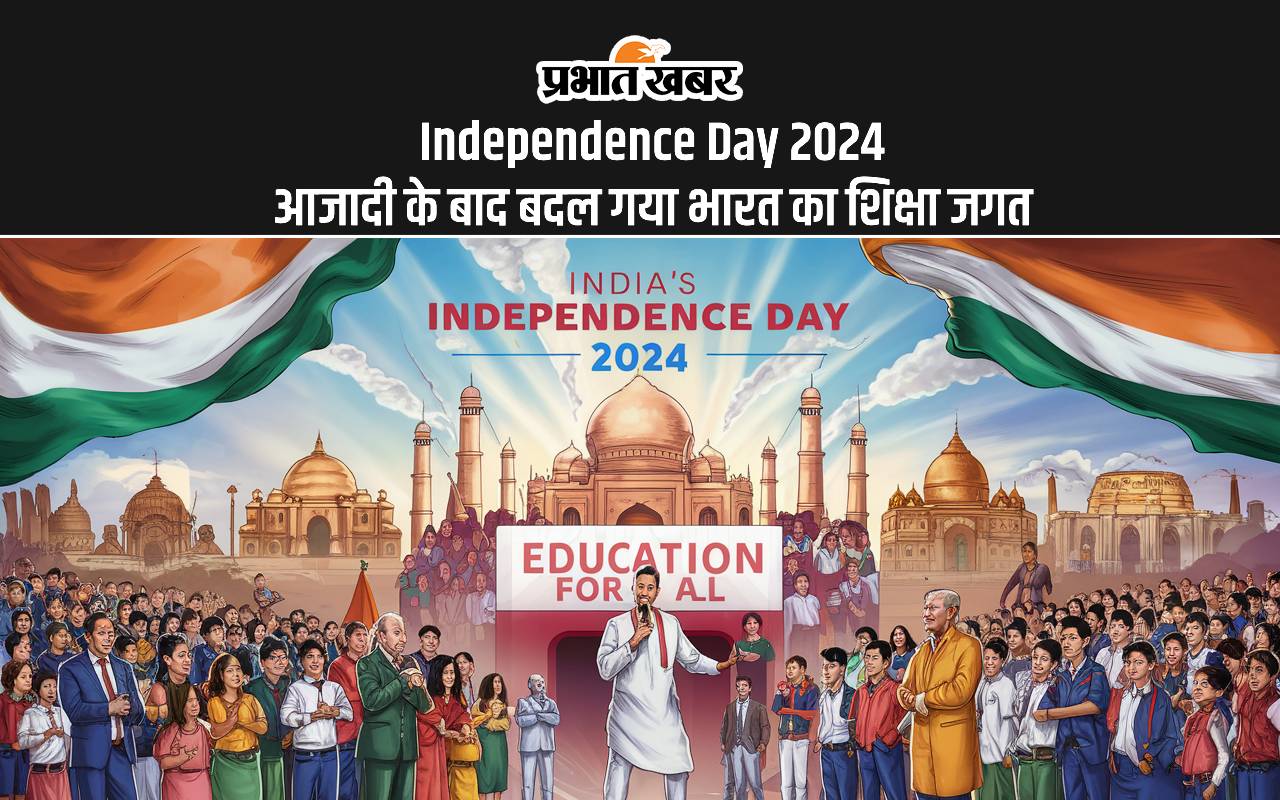Independence Day 2024: On August 15, it will be 78 years of independence and the country seems to be busy celebrating the national holiday of Independence Day. On this day, the glow of happiness is seen on the faces of all Indians as well as school children, the reason being that they get a chance to participate in the Independence Day celebrations organized in schools, even if they do not register their presence in any program even if they do not get it, they will certainly go and watch the independence parties organized in school where flag hoisting, cultural programs, etc. are held. Children also get excited on this day as they are particularly curious to know how they got independence. It is also important to know what changes have taken place in the education sector of India after independence. We will tell you about it here today
Independence Day 2024: Cultural heritage is a symbol of India’s unity in diversity.
Motto Education for all given
Let us tell you that after independence, the slogan of education for all was given. For this purpose, the Department of Education was created, which later became the Ministry of Human Resources. In addition, an attempt was made to meet the basic needs of the field of education by establishing a department of education in each state.
Establishment of NCERT
NCERT was established in the year 1961 with an aim to focus on quality of education. Later in the year 1968 on the recommendations of Kothari Education Commission the first National Education Policy was adopted and in 1975 Integrated Child Development Services Scheme was started for proper development of children up to 6 years of age. After this a lot of work was required in this area so in 1986 a new National Education Policy was adopted which in 1992 on the basis of the review of Acharya Ramamurthy Committee some changes were made in the National Education Policy.
Establishment of Sarva Shiksha Abhiyan
‘Sarva Shiksha Abhiyan’ was started by the Central Government in November 2000. In this campaign, the aim was to provide primary education to all children between the age of 6 to 14 years. In 2009, it was made a fundamental right by granting the ‘Right to Education’, thus every child has the right to study.
Lunch was organized
Anganwadi was established in every village to educate the children of the country. Here, apart from education, they were also provided with balanced food. The government made arrangements for mid-day meals for the children of government schools in the village.
These institutions were established in the field of higher education.
Many changes also took place in the field of higher education and institutions were created. Indian Institute of Management (IIM) colleges were established. With this, semester-based studies were started in many universities. Only after independence, 6 Indian Institutes of Management and 9 Indian Institutes of Technology were established.
national education policy
In 2020, a new National Education Policy was introduced and the Ministry of Human Resources and Development has now been renamed the Ministry of Education. Under this policy, the 5+3+3+4 model has been adopted in schools with a focus on teaching in regional languages.
Disclaimer:
The information contained in this post is for general information purposes only. We make no representations or warranties of any kind, express or implied, about the completeness, accuracy, reliability, suitability or availability with respect to the website or the information, products, services, or related graphics contained on the post for any purpose.
We respect the intellectual property rights of content creators. If you are the owner of any material featured on our website and have concerns about its use, please contact us. We are committed to addressing any copyright issues promptly and will remove any material within 2 days of receiving a request from the rightful owner.

